There are a few chosen Himalayan destinations that instantly connect you with nature and make you fall in love with their pristine wilderness. Winter Kuari Pass Trek offers you a similar experience at every level, so much so that your expedition turns surprisingly extraordinary.

Being one of the most visited treks, Winter Kuari Pass stuns you in every season as it unfolds its pleasant surprises all along. When its charm overpowers your senses, every time seems the best time to visit Kuari Pass. With that being said, it depends entirely on your preference as to what you are expecting. Whether you want to tread through snowy trails or witness all shades of greenery, the last thing this trek will do is disappoint you.
Winter Kuari Pass is a moderate trek that can be done by beginners as well. Winters, however, are a bit challenging; but again, that’s the gravity of snow. This 6-day trek takes you to some of the most visually appealing landscapes with incredible campsites to stay in between. From lush forest covers to rolling meadows to captivating mountain peaks, this trek promises you with the maximum fun, and more.
Season-Wise Breakdown
The influence of seasons on Kuari Pass trek is so profound that the trail looks completely different in each season. In other words, every season breathes something refreshing into this trek, which almost makes it appear new.
Here is a season-wise analysis of Winter Kuari Pass features:
- Winter:
- Spring:
- Summer:
- Monsoon:
- Autumn:

Winter months include mid-November to February, while transformation starts appearing with the arrival of December. From then on, you will witness astonishing snowy sceneries and surrounding mountain peaks with more prominence. As the time progresses, the entire trail gets blanketed by a thick snow cover, turning the whole region into a magical wonderland. The trek truly emits unmatched charm, prompting you to capture the visuals at every twist and turn. Every feature on and around this trek has either acquired a completely new form or is profoundly enhanced in beauty. The distinguishing pine and cedar trees in the midst of snow-packed forests are a delight to watch, while oaks and rhododendrons make these forests even denser. The undulating meadows turn gleaming white and a fresh snowfall at any time resets the entire setting. It’s one thing to fantasize being there and walking the winter landscape, but it's a completely different feeling being actually there and experiencing it in real.
At this time, Kuari Pass receives fewer crowds as the trail needs more physical exertion due to knee-deep snow cover. But it becomes a perfect getaway for solitude seekers, nature lovers, and adventure enthusiasts. One of the most attractive winter attributes of this trek is the magnificence and grandeur with which the Himalayan peaks are visible. From different sections of the trail, you will get mesmerizing glimpses of many prominent Himalayan peaks. The peaks visible from Winter Kuari Pass Trek are: Kamet, Chaukhambha, Dronagiri, Changabang, Kunti bhandar, Neelkanth, Nanda Devi, Hathi-Gauri, and Trishuli etc. As the winter draws to a close, the weather exhibits a perfect balance of snow and surroundings. With sunny skies above head, the trail marks appear along the snow.

The spring season marks a rejuvenating transition, combining the remains of snow with fresh greenery. With the onset of spring season in Winter Kuari Pass, you will be delighted to experience mixed scenery around you. Usually the spring months in this region are March and April, which offer a pleasing blend of snowy and grassy landscapes. The weather is pleasant during the day with clear skies, whereas nights are still chilly as the temperature ranges from 5 to 15- degrees. The entire region comes alive with lush greenery, sun-bathed forest covers, and illuminated environment. The vibrant red and pink rhododendron flowers spruce up the forests, making the trek an extremely attractive corridor for beginners.
As the season proceeds, the trails become manageable and are easier to trek on due to the significant reduction of snowline. The filtering sunrays falling on the clearings in the middle of dense forests provide them with natural spotlight. The lush meadows that lay stretched ahead further add to the beauty. From here, you can watch cascading hilltops and mountains in the distance. The summit of Kuari Pass offers you a crystal clear view of Himalayan peaks right in front of you. Thus, there is so much to ingest about nature and its different facets while spending some time here on the top.

The summer season comprises May and June with temperature ranging from 10-degrees to 20-degrees. Due to warm and pleasant weather and well-marked trails, the trekking conditions become more comfortable. At this time, Winter Kuari Pass Trek becomes ideal for beginners as well as families. The summer season basically characterizes lush-green meadows, alluring rhododendron flowers, cool-refreshing wind, and clear skies. The sounds of streams flowing nearby the winding trails are quite satisfying and amusing. The Golden Oak forests of Kuari Pass are among the most captivating and they are grown in a section where the climb is not very steep. During the summer season, the trail through these forests gives a soothing and pleasant feeling.
Summer is also the time when you witness multiple varieties of wildflowers. You can see them in the forests as well as meadows. At this point in time, Khullara campsite and Gorson Bugyal look extremely captivating with lush greenery and colorful scenery. As the temperature of this entire region becomes warm and pleasant, the forests come alive with different bird and animal species. This is also an ideal time for bird-watching. If you are lucky enough, you can see Himalayan Monal, musk deer, Himalayan tahr, Himalayan black bear, and barking deer. Not to forget, the majestic Himalayan peaks seen in the backdrop look crystal clear.
The months July and August form the monsoon season, which is usually not recommended for trekking because of heavy rainfall. The trail turns very slippery, muddy and difficult to navigate. Not only that, in the high-altitude alpine region of Kuari Pass, fog and mist mostly block the breathtaking mountain views. The temperature ranges from 10-degrees to 22-degrees. Besides, there may be unexpected incidents of landslides and leech infestations.

Autumn months typically include October and November that offer clear views of the post-monsoon environment. The weather is clear, crisp and dry with temperature ranging from 5-degrees to 12-degrees during the day, while at night, it varies from 0-degrees to 5-degrees. One of the main features of this season is the way forests and meadows obtain vibrant colors. Forests have different types of trees, so they look visually appealing with colors like red, yellow, brown, and rust. The alpine meadows, on the other hand, look like stunning golden grasslands. At this time, the Kuari Pass trek is easy to moderate and quite appropriate for beginners due to dry, easy-to-walk, and well-marked trails.
The vivid colors of autumn are displayed so beautifully that the trek becomes a paradise for photographers. Also because of the clear atmosphere and brighter sunlight, the visibility is excellent. Peaks like Nanda Devi, Kamet and Hathi-Ghoda appear mesmerizing.
Best Time to Visit Winter Kuari Pass
Kuari Pass is also known as a winter special trek because of some of the most tempting sceneries in the entire Himalayan region. It is also known as Curzon Trail because it was first discovered by Lord Curzon, the British Viceroy of India, in 1905.
So here is why winter is the best time to visit Winter Kuari Pass Trek:
- A Frozen Ambience
- Incredible Mountain Views
- Thrilling Snow-Walks
- Challenging Yet Accessible
- Rare Wildlife Glimpses
- Best for Photography
If you want to be truly smitten by the magical influence of Kuari Pass, mid-December to March is the best time when most of the landscapes are blanketed by the snow. The whole trek transforms into a breathtaking winter wonderland, with frequent layers of fresh snow. Gorson Bugyal and Khullara meadows get a complete makeover and walking through these landscapes gives you a surreal experience. One of the striking features of snowy ambience is the way snow-draped forests turn into something amazing, with pine, oak and rhododendron trees.
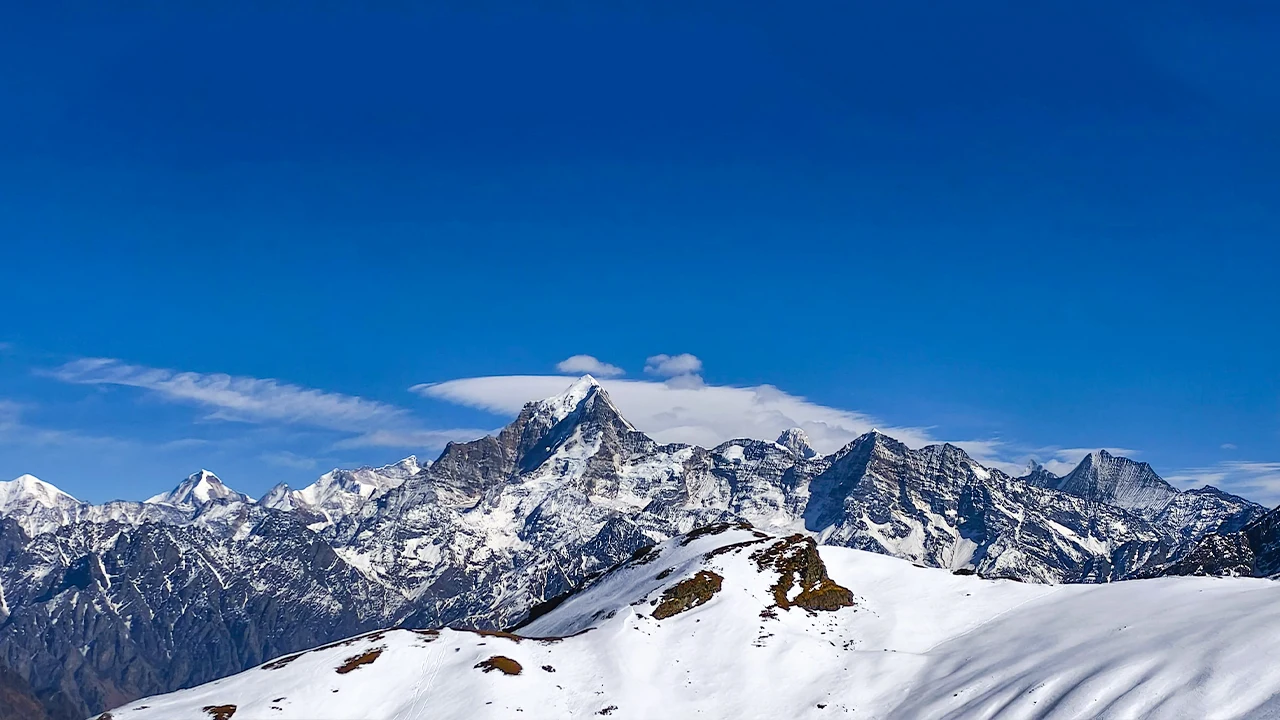
Winters offer exceptionally clear and unobstructed views of Himalayan summits. Although you can witness different mountain ranges from different segments of the trek, at the summit you get the luxury of experiencing a 360-degree view of mountain peaks. So the clearly visible peaks from here are: Nanda Devi – second highest peak of India, Dronagiri, Chaukhamba Massif, Kamet, Mana, Kalanka, Trishul, Nanda Ghunti etc.
One of the profound reasons to visit Kuari Pass in winters is obviously the snow. So if you are looking forward to experiencing snow-walks on the trek, you will get them profusely in the months of January and February. It becomes a unique and exhilarating encounter when you walk through knee-deep snow trails of Khullara campsite and Gorson Bugyal meadow.
Winter treks are sometimes difficult due to heavy snowfall, colder temperatures and completely covered trails. Despite this fact, Winter Kuari Pass is still accessible and manageable because of gradual ascents and easier routes. Certain sections are steep and ridges are narrow at different places, but the overall ascent is gradual and achievable. It allows you to acclimatize without any challenge.
The entire region of Kuari Pass and adjacent areas are known for some of the rare, exotic species of animals and birds. Though sightings are less frequent, on a lucky day you can witness a glimpse of elusive musk deer, red fox, Himalayan Tahr, and Himalayan black bear. For birdwatching enthusiasts, this trek is a nice location to see rare bird species including, Himalayan Monal, Himalayan Griffon, Himalayan Magpie, and Snow Partridge.
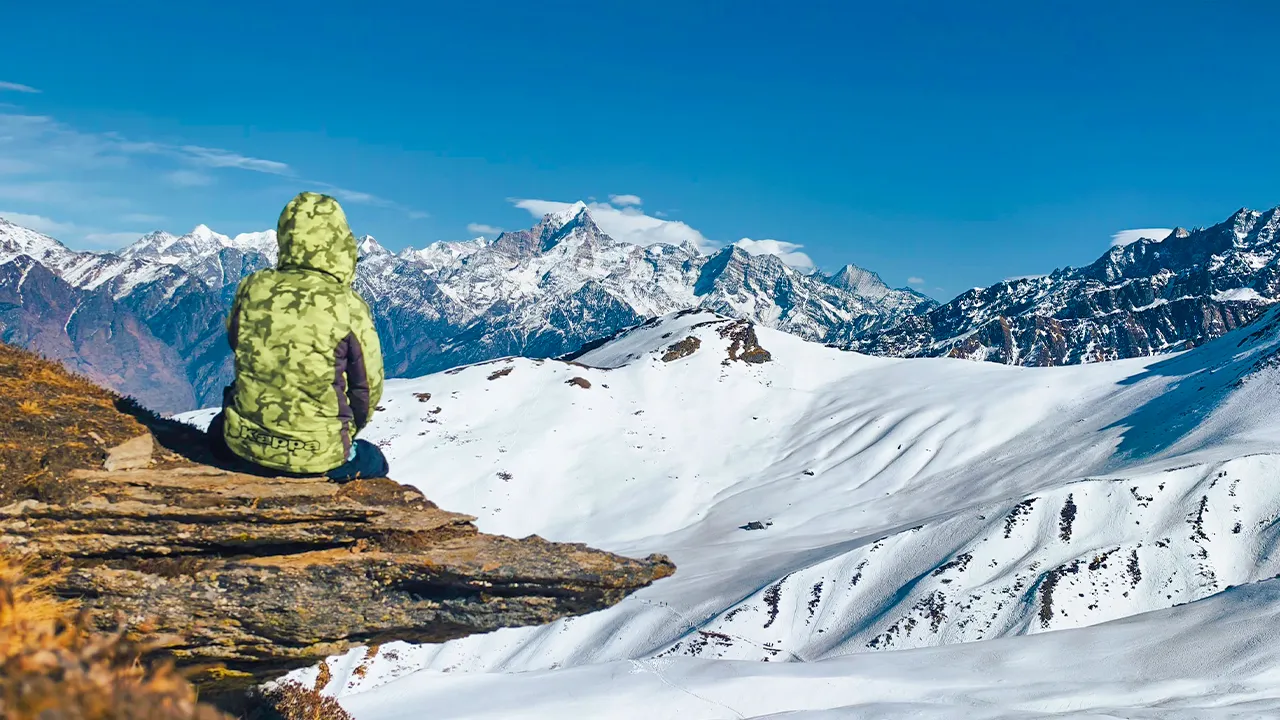
Without any shred of doubt, Kuari Pass Trek is a photographer’s dreamland, particularly in winters. You will get ample opportunities and landscapes to capture and cherish. From snow-covered landscapes to mesmerizing Himalayan peaks to star-studded night skies, you can shoot and capture every scenery that enchants you. Not to forget, the local culture of this region is not just unique but welcoming and engaging. You will witness timeless village houses and traditional huts that also invite you to capture them in a camera.
Seasonal Weather and Tips
| Winter | Spring | Summer | Monsoon | Autumn | |
| Temperature | Daytime: 0°C to 10°C Nighttime: -5°C to -15°C |
Daytime: 10°C to 18°C Nighttime: 0°C to 5°C |
Daytime: 10°C to 20°C Nighttime: 5°C to 8°C |
Daytime: 4°C to 13°C and 12°C to 18°C Nighttime: 10°C to 15°C |
Daytime: 5°C to 15°C Nighttime: 0°C to 5°C and -1°C to -3°C |
| Weather | Snowfall Clear skies Chilly winds Freezing nights |
Pleasant Melting snow Cold air Occasional afternoon showers |
Pleasant, stable and clear Warm days, cool evenings and cooler nights Crystal-clear views |
Heavy rainfall Cloudy and misty atmosphere Slippery trails Poor visibility |
Pleasant Crisp and clear skies Crystal-clear views Vibrant colors |
| Attributes | Highly attractive snow-covered trails Stunning views of Himalayan peaks Snow-laden forests Expansive snowy alpine meadows |
Blooming rhododendron flowers Clear and crisp views of Himalayas Panoramic sceneries Stunning contrast of greenery and snow |
Enchanting trails through dense forests of oak, pine and rhododendron trees Attractive campsites of Gulling Top and Khullara Top Lush green meadows of Khullara and Gorson Bugyal Remarkable 360-degree view of mountain range from the Kuari Pass summit |
The trek is not recommended due to torrential rainfall and slippery trails The mountain views are obstructed due to fog and mist |
The moderate climate offers pleasant and dry weather conditions that is good for beginners The alpine meadows beautifully acquire golden, reddish, and yellow hues Panoramic views of prominent mountain summits throughout the trail as well as from the summit Surprising sightings of wildlife |
If you want to get detailed information about the Kuari Pass Trek Guide for Beginners, just click on this link and plan your next trip accordingly.
Clothing and Gear Tips
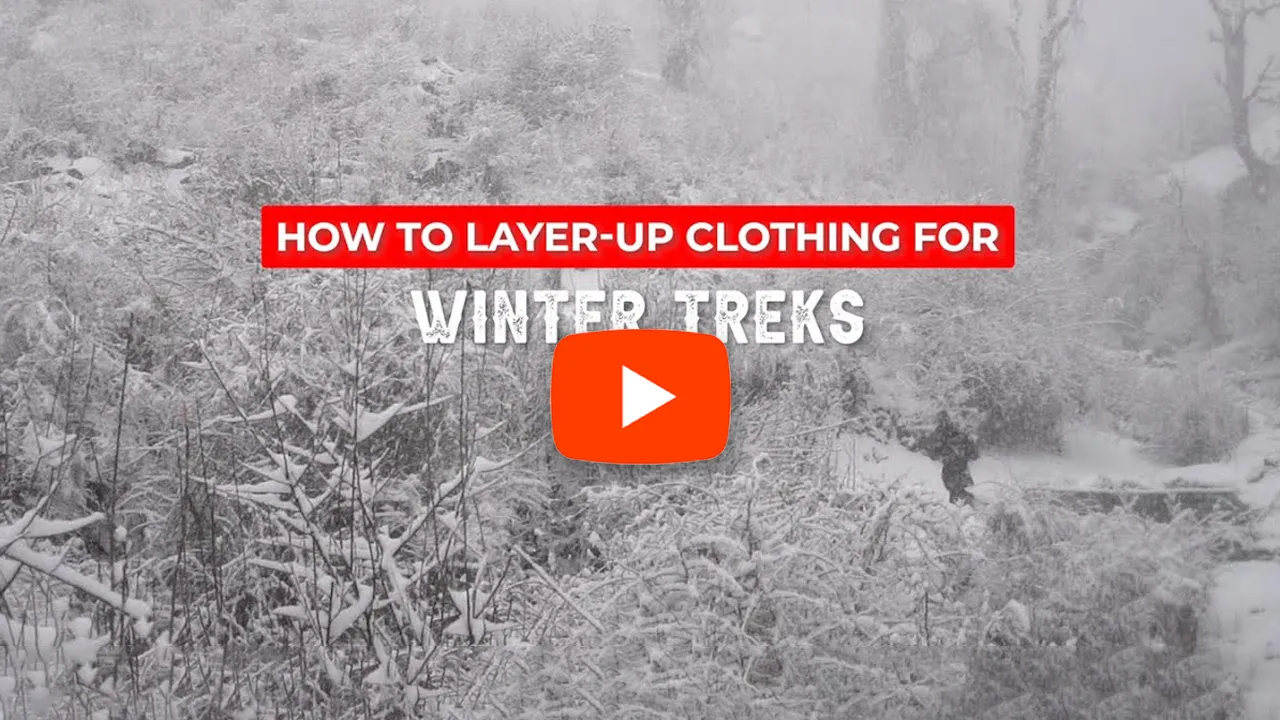
Kuari Pass in winter months offer exceptional alpine experience, however it needs a great deal on your part to fully prepare beforehand and pack what is most essential. So if you haven’t packed right, you might spend more time shivering than enjoying the landscapes.
- Clothing
- Backpack
- Trekking Shoes
- Other Crucial Accessories
On a high-altitude winter trek, you have to leave no stone unturned to stay warm and cozy. If you don’t pay attention to the required clothing, cold is what will trouble you the most. So, effective layering technique is the first and foremost way to tackle cold. It’s the proper way to achieve maximum warmth as well as flexibility.
A good strategy to follow here is “3-4-5 technique” – 3 insulation layers in summer, 4 in autumn, and 5 in winter. Thus, in the winter season between December and March, you can wear one pair of inner thermal, one fleece layer, one quick-dry t-shirt or light fleece layer, one sweater/sweatshirt, and a padded down jacket.
Apart from effective layering, you need fat, woolen socks because keeping your feet warm all the time is very important. Heat pads and wipes can be life-savers on high altitudes.
The next crucial thing to keep in mind is wind-proofing and waterproofing as strong winds blow in high-altitude along with heavy snowfall. So you need to pack a pair of windproof and waterproof jackets and pants.
Your backpack is like a good companion throughout the trek. It’s up to you whether you want it to be comfortable or a burden on your shoulders. So to start with, consider a backpack that has a capacity of 50 to 60 litres, with chest and waist straps. Better still, you should choose one that has an inbuilt rain-cover attached to it. A multi-pocket bag is also multi-purpose. You can put heavy gear in bigger pockets and smaller, outward pockets will be used to put items that are used on an emergency basis.
In the freezing temperatures of winter, you need to take extra care of your feet. Not only your upper body, but your feet also need proper insulation and waterproofing to keep them dry and comfortable. For that, you need to bring sturdy, insulated, durable, and waterproof shoes with ankle support and good grip. On icy and sloping trails, you need better traction and balance to properly navigate the trek. So a good pair with the above qualities is a must.
Apart from the above-mentioned essential packing, you need a number of various other safety items including, headlamp, emergency first-aid kit, gaiters, trekking poles, quick-dry towel, hand sanitizer, antibacterial powder, sun cap, water bottles, woolen cap, balaclava, muffler, gloves, UV-protected sunglasses, moisturizer, cold cream, and lip balm.
Trekking and Safety Tips
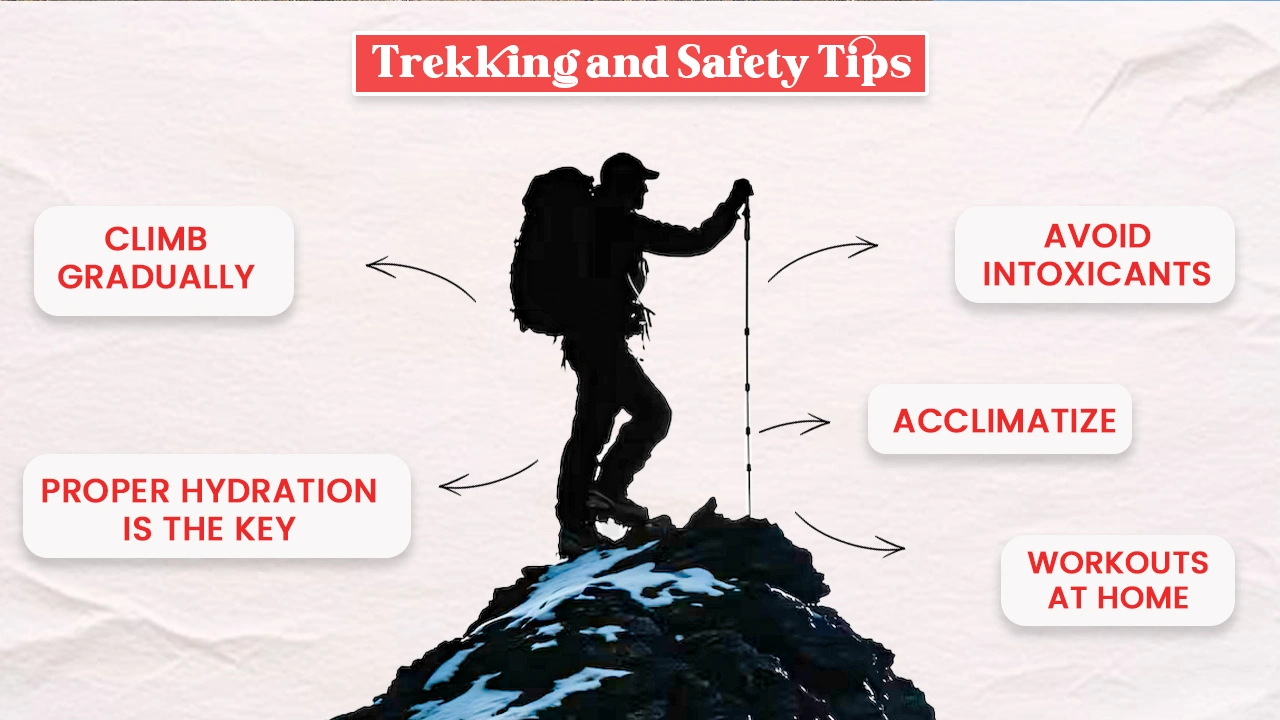
For a safe, sound and enjoyable journey on Winter Kuari Pass Trek, you also need to take a few pre-emptive steps in terms of health and fitness.
- Acclimatize: To avoid altitude sickness, you can spend an extra buffer day to allow your body to adjust to the altitude.
- Climb Gradually: While on the trek, it’s always better to walk slowly with regular breaks/halts. It saves your energy and helps you walk comfortably.
- Proper Hydration is the Key: It is always recommended that you should drink 3 to 4 liters of water per day. Before going on the trek, you can develop this habit while at home.
- Avoid Intoxicants: Alcohol, smoking and other narcotics are strictly prohibited during any trek. They can cause fatigue, nausea, vomit, dehydration etc. which in turn cause altitude sickness.
- Workouts at Home: Before setting your foot on your next Himalayan journey, you should focus on enhancing your cardiovascular endurance, lung capacity, stamina, and muscle strength. Practice jogging, running, stair climbing, squats, push-ups, and breathing exercises at home.
To ensure a safe and well-planned trip, explore the acclimatization strategies and prepare for your next adventure with the right knowledge.
Conclusion
Winter Kuari Pass Trek is one of the most visited winter treks in the Himalayan region, and rightly so. First off, it is blessed with natural beauty. Secondly, the trails are comfortable and easy to walk. Thirdly, every season makes it uniquely captivating in its own way. Winters, however, transform Kuari Pass in the most profound manner. From snow-draped forests to blanketed meadows to stunning mountain peaks, this trek surprises you with its winter charm. That said, the extreme winter weather also requires you to make proper safety precautions and backpacking before going on this trek.
FAQs
1. What is the difficulty level of Winter Kuari Pass Trek?
Winter Kuari Pass Trek is easy to moderate and can be done by beginners as well. In spring, summer and autumn, this trek is easy for first timers as well as families. In winters, the trek gets moderate due to snow, but gives equally rewarding experience.
2. What is the best time to visit Winter Kuari Pass?
It looks pleasingly different in every season. For instance, in spring the forests are blooming with rhododendron flowers; in summers, weather is pleasant and greenery is everywhere; in autumns, you will witness vibrant colors and wildflowers; while in winters, the whole landscape is covered by a mesmerizing snow blanket. So to sum up, in winters, you will experience a frozen wonderland in the Kuari Pass trek.
3. Can I find snow in Kuari Pass Trek in every season?
No, Snow is only found from mid-December to March in Winter Kuari Pass Trek.
4. Do I need to have prior trekking experience to do Winter Kuari Pass Trek?
If you have prior trekking experience, that’s well and good as it will help you a great deal in any trek. But as far as Kuari pass trek is concerned, you don't compulsorily need it as it is easy to moderate and can be done by any healthy adult.
5. What should I pack for Winter Kuari Pass Trek?
The packing essentials for Kuari Pass trek include: a sturdy backpack with enough space, ankle-support shoes with good grip, down jacket, fleece jacket, waterproof track pants, thermals, quick-dry t-shirts, trekking poles, woolen cap, balaclava, muffler, gloves, UV-protected sunglasses, moisturizer, cold cream, and lip balm.
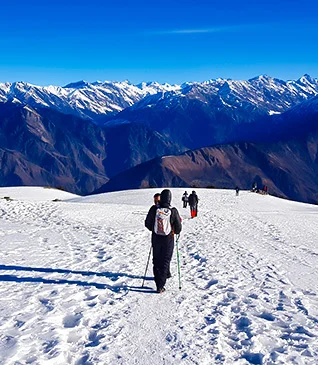


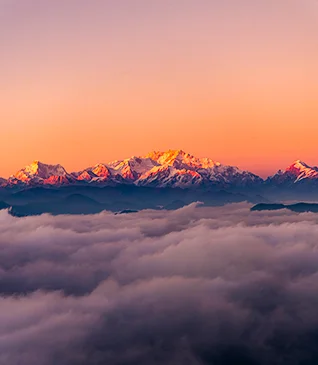

.webp)
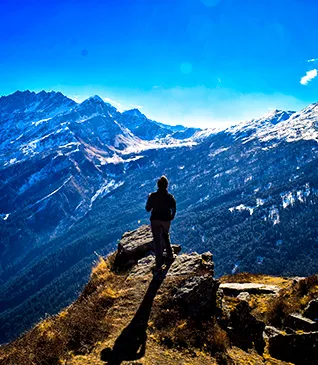
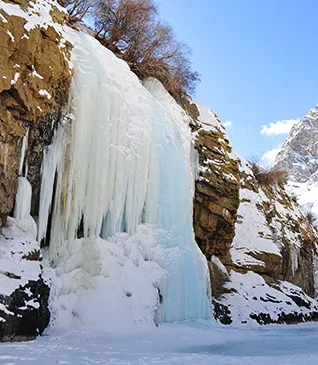
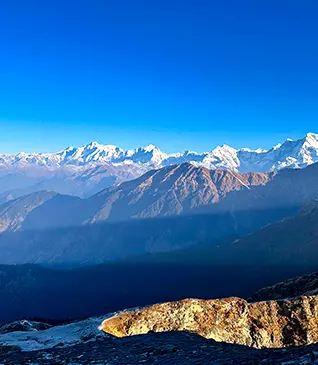

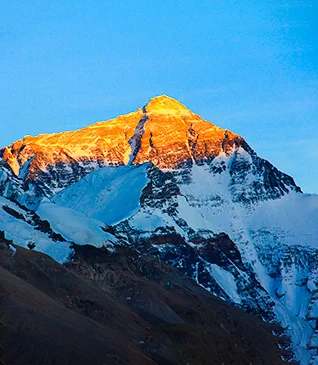
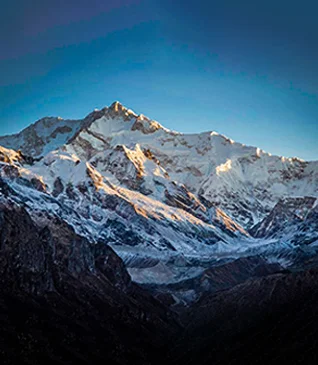
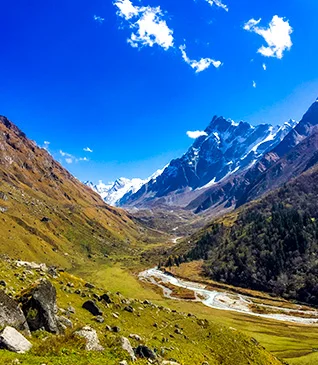
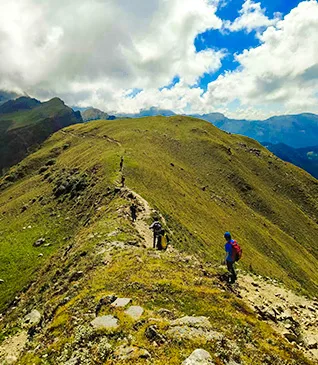
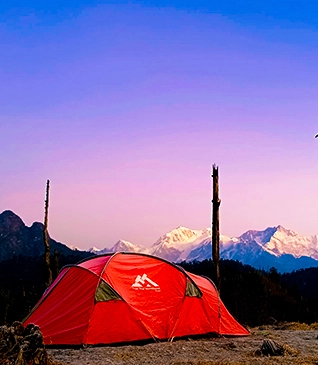

.webp)


